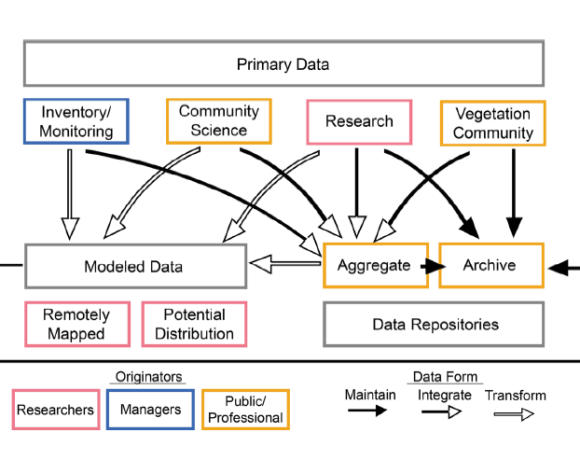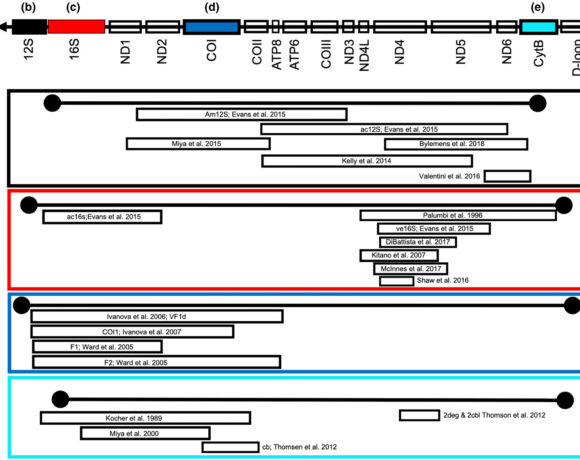Global Change & Invasive Species: Priorities for a Path Forward
Summary written by Justin Dalaba, edited by Carrie Brown-Lima
Understanding and predicting invasions and their consequences are scientific endeavors, whereas managing them successfully largely rests with society…
The increasing complexity of biological invasions and factors that govern their impacts are challenges we face globally. In this paper, Ricciardi et al. 2021 articulate and describe four priority issues where invasion science will benefit from adapting to rapid global change. This paper summarizes a large body of literature and the four overarching issues that were agreed upon by this team of leading invasion ecologists during an international gathering in 2018. They articulate critical knowledge gaps within each issue, which in some cases are limited by technological barriers, while others are limited by lack of cooperation at a national or international scale.
Key recommendations by priority area:
-
- Priority one: Predicting ecological impacts of invasions under rapid environmental change
Recommendation: Develop a more comprehensive framework for greater predictive power
Despite substantial progress toward understanding how non-native species introductions occur, there are many uncertainties in the face of climate change. In some cases, an invader may be present for years or before an environmental change triggers a new impact. A key path forward to predicting invasions is to better understand invasion debt and time lags. Invasion debt is in some ways comparable to the emergence of human diseases when we fail to keep up with preventative hygienic or social measures. - Priority two: Addressing the challenge of global environmental change in invasion science
Recommendation: Consider the cumulative effects of global environmental changes in invasive species management and climate mitigation strategies
Extreme climate events, such as droughts, flooding, severe storms, and fires, are known to facilitate invasion. The synergistic effects of climate change and socioeconomic factors, such as commercial trade corridors, have the potential for worsening ecological and human health consequences of invasion. - Priority three: Resolving the taxonomic impediment
Recommendation: Improve taxonomic expertise through an international emphasis on the value of non-native species identification and early detection
Our societal capacity to accurately recognize non-native versus native species could be a limitation to biosecurity and early detection of new invaders. The largest knowledge gaps are associated with the most abundant species, such as microscopic algae and animals. This includes non-native pathogens or parasites that can spill over to native hosts. - Priority four: Enhancing international biosecurity and multi-stakeholder cooperation
Recommendation: Consider the bridgehead of global dispersal networks and provide better guidance for national and international biosecurity programs
Global dispersal networks allow for invaders to move to new regions from locations where they have already established (known as bridgehead regions). Improving cooperation among countries that serve as “bridgehead regions” could be more beneficial than individual attempts to exclude species from arriving in the first place. - Bringing it all together: a cross disciplinary approach.
Greater linkages across disciplines could not only offer innovative solutions to otherwise robust invasion challenges, but could benefit each field independently. To exemplify this, pathways and factors promoting the spread of COVID-19 and other infectious diseases mirror those of invasive species, providing an impetus for ecologists and biomedical researchers to advance knowledge and improve prevention or control.
- Priority one: Predicting ecological impacts of invasions under rapid environmental change
Management implications:
- Mitigation efforts related to climate change (i.e. drought, erosion, flooding) must consider the possible consequences of promoting non-native species
- Infrastructure should be designed to reduce suitability and potential opportunity for invasion (i.e. flood control structures for sea level rise may create habitat for non-native species arriving through ballast or marine aquarium trade)
- Ecosystem restoration efforts must consider the evolutionary history and species interactions to avoid unintended consequences (i.e. translocation to restore key ecosystem function, or targeted removal of a single invasive species)
- Predictive models should integrate other aspects of global change than just climate change to better understand potential effects of invaders on ecosystem services and human well-being
- International emphasis on biosecurity is critical for policies and management efforts that aim to reduce invasion pathways through economic and societal drivers (i.e. commercial trade)













